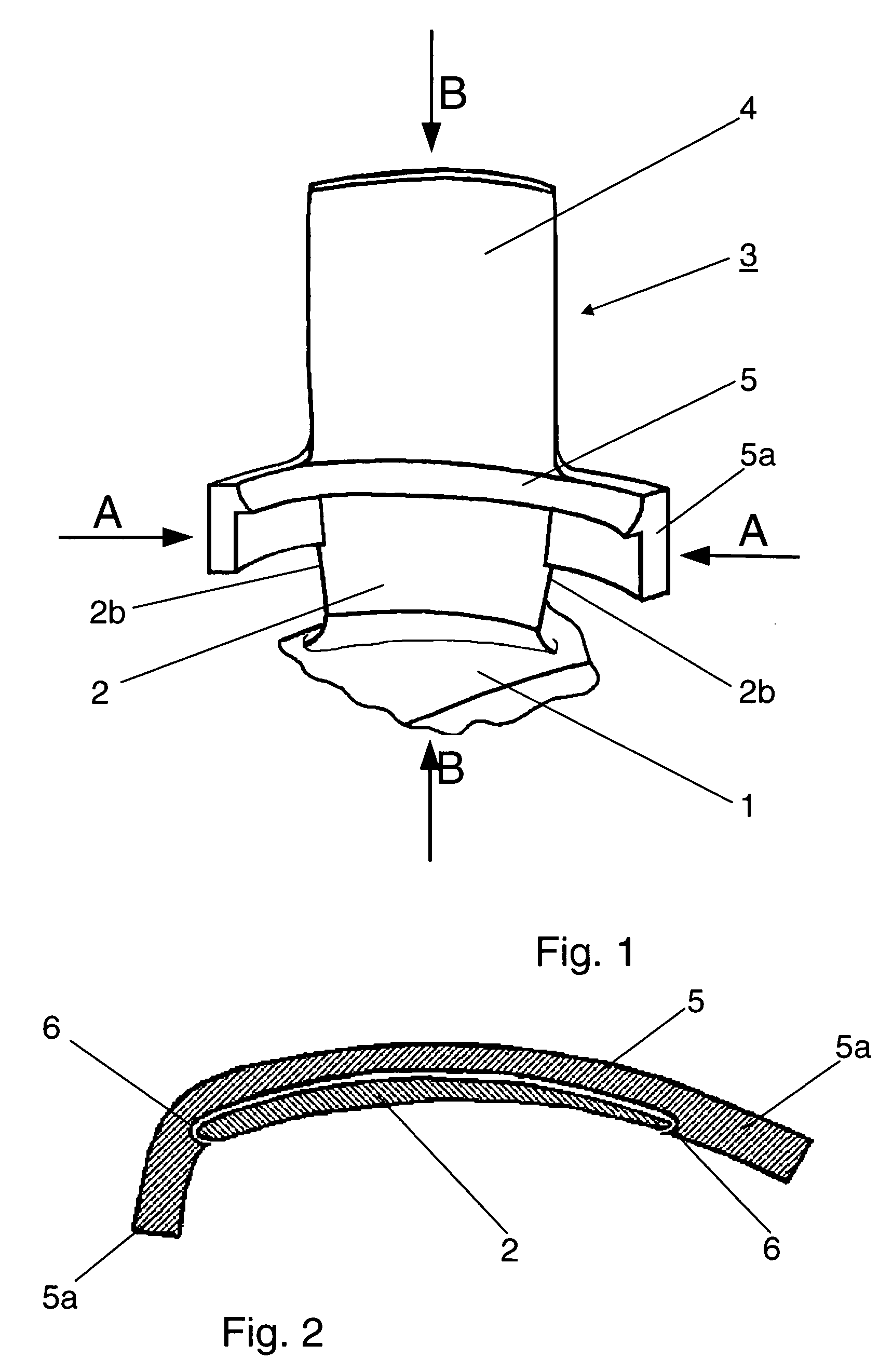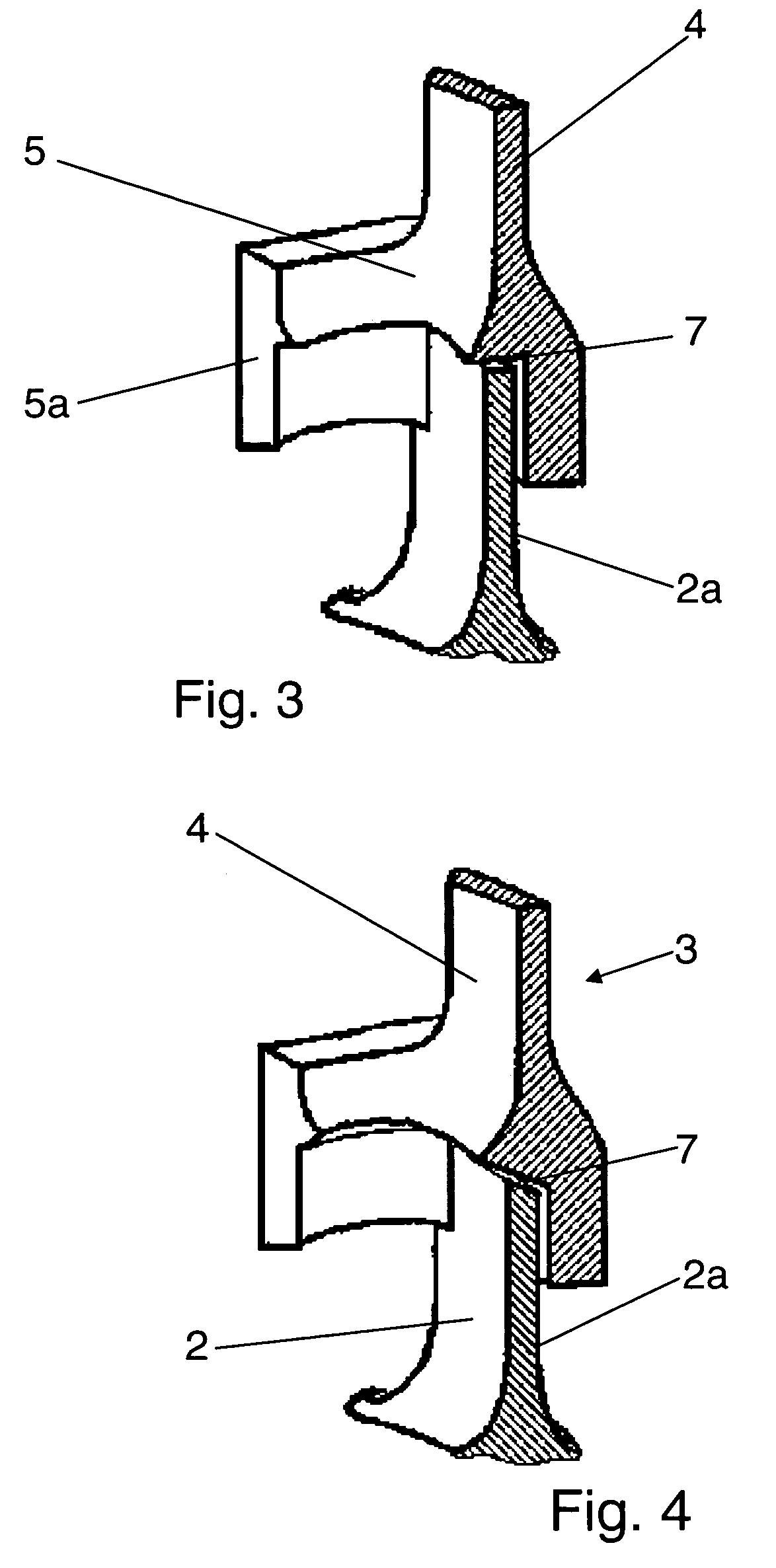Method and blade repair element for blisk repair or new blisk manufacture
a technology for blisks and blades, applied in manufacturing tools, machines/engines, forging/pressing/hammering apparatus, etc., can solve the problems of affecting the leading edge of the blade is liable to damage by larger objects, and the compression blade of the aircraft engine is subject to considerable erosion. , to achieve the effect of ensuring the longevity of the repaired blisk or blisk drum
- Summary
- Abstract
- Description
- Claims
- Application Information
AI Technical Summary
Benefits of technology
Problems solved by technology
Method used
Image
Examples
Embodiment Construction
[0017]In accordance with the present repair method, the worn or damaged blade sections of a single or multi-stage blisk used, for example, in a compressor, are cut off over the entire width of the blade such that a blade stump 2 is left on the disk 1 of the blisk, this stump forming one piece with the disk. Beforehand, vibration investigations are performed on the blades allocated to the respective compressor stage to determine the minimum vibration area across the blade width for the respective blade type. It was found that the nodal lines for low vibrations and, thus, low material stress extend, among others, in an area located slightly above the blade root and extending essentially over the entire blade width. This is exactly the area where the damaged blade is cut off and the free edge of the blade stump 2 left for subsequent welding is located. Obviously, the height of the stump can vary on a multi-stage blisk (blisk drum) with different blades in the individual stages. It is a...
PUM
| Property | Measurement | Unit |
|---|---|---|
| shape | aaaaa | aaaaa |
| size | aaaaa | aaaaa |
| width | aaaaa | aaaaa |
Abstract
Description
Claims
Application Information
 Login to View More
Login to View More - R&D
- Intellectual Property
- Life Sciences
- Materials
- Tech Scout
- Unparalleled Data Quality
- Higher Quality Content
- 60% Fewer Hallucinations
Browse by: Latest US Patents, China's latest patents, Technical Efficacy Thesaurus, Application Domain, Technology Topic, Popular Technical Reports.
© 2025 PatSnap. All rights reserved.Legal|Privacy policy|Modern Slavery Act Transparency Statement|Sitemap|About US| Contact US: help@patsnap.com



